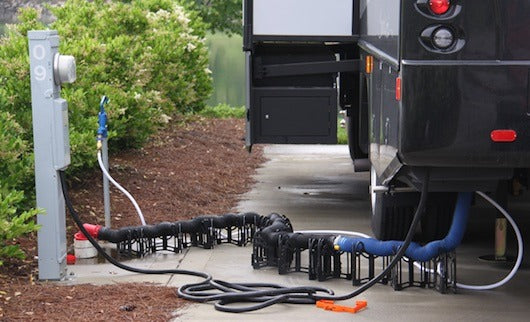
What Is the Best Way to Hook Up a Sewage Drain to an RV
If you’re looking for a way to hook up a sewage drain to your RV, there are several methods available. Depending on the type of RV and local plumbing regulations, some methods may be more suitable than others. In this article, we discuss the best ways to hook up a sewage drain to an RV and explore the pros and cons of each option.
What type of sewage drain is best for an RV?
The best type of sewage drain for an RV is usually a gravity-fed system. This type of system uses the force of gravity to move water and waste from the RV’s holding tank into a septic tank or sewer connection. Gravity systems are typically easier to install and require less maintenance than other types of drainage systems, such as pressure-assisted systems.
How do you hook up a sewage drain to your RV?
Once you’ve chosen the type of sewage drain that’s best for your RV, it’s time to start connecting everything together. To connect the drain line to your RV, you will need two things:
1) An elbow fitting
2) A threaded coupling connector.
Start by placing the elbow fitting onto your RV’s sewer connection pipe. Then, insert the threaded coupling connector into the elbow fitting. To ensure a tight seal, use waterproof plumber’s tape to wrap the threads of both parts together before you tighten them with a wrench. Finally, connect one end of the drain line to the threaded coupling connector and secure it in place with a hose clamp or other fastening device.
What else is needed for a proper sewage drain installation?
In addition to connecting the drain line to your RV, you will also need to install additional components such as venting pipes and backflow valves. Venting pipes allow air to enter and escape from your RV’s holding tank while preventing sewer gases from entering the living area. Backflow valves prevent wastewater from flowing backwards into your RV’s holding tank. It is important to check with your local plumbing regulations to find out what else may be required for a proper sewage drain installation.
Once you have all of the necessary components installed, it’s time to test your system. Fill up your RV’s holding tank and check for any leaks or blockages. If everything is working properly, you should be able to safely connect your RV’s sewage drain to a septic tank or sewer connection.
Hooking up a sewage drain to an RV can seem daunting at first, but by following the steps outlined above, you can make sure it’s done correctly. With a bit of preparation and the right tools, you can ensure a safe and reliable sewage drain connection for your RV.

How to Permanently Hook Up your RV to Septic?
If you are living in your motorhome full-time and want an RV sewer hookup permanent, it is possible to connect your RV to a septic tank. The process involves digging a trench between the septic tank and the RV to house the sewer line. You will also need to install an appropriate drainage system and backflow preventers. It is important to check with your local government before making any major changes to ensure that you are following all applicable laws and regulations. Once everything is installed, you will need to test the system to make sure it is working properly. With a bit of preparation and planning, you can have a permanent sewage hookup for your RV in no time.
What are the benefits of using a sewage drain for an RV?
Using a sewage drain for an RV is beneficial in many ways. Not only does it provide a convenient way to dispose of your wastewater, but it also helps keep the environment clean and reduces the chance of contamination from human waste. In addition, using a sewage drain can increase the lifespan of your RV’s holding tank by preventing blockages and clogs. Finally, a sewage drain can help you save money by eliminating the need for an onsite septic tank or other more expensive wastewater disposal methods.
Overall, using a sewage drain is an effective way to manage your RV’s wastewater and keep your living environment clean and healthy. With the right setup and installation, it can also provide long-term savings in both time and money while helping to protect the environment.
